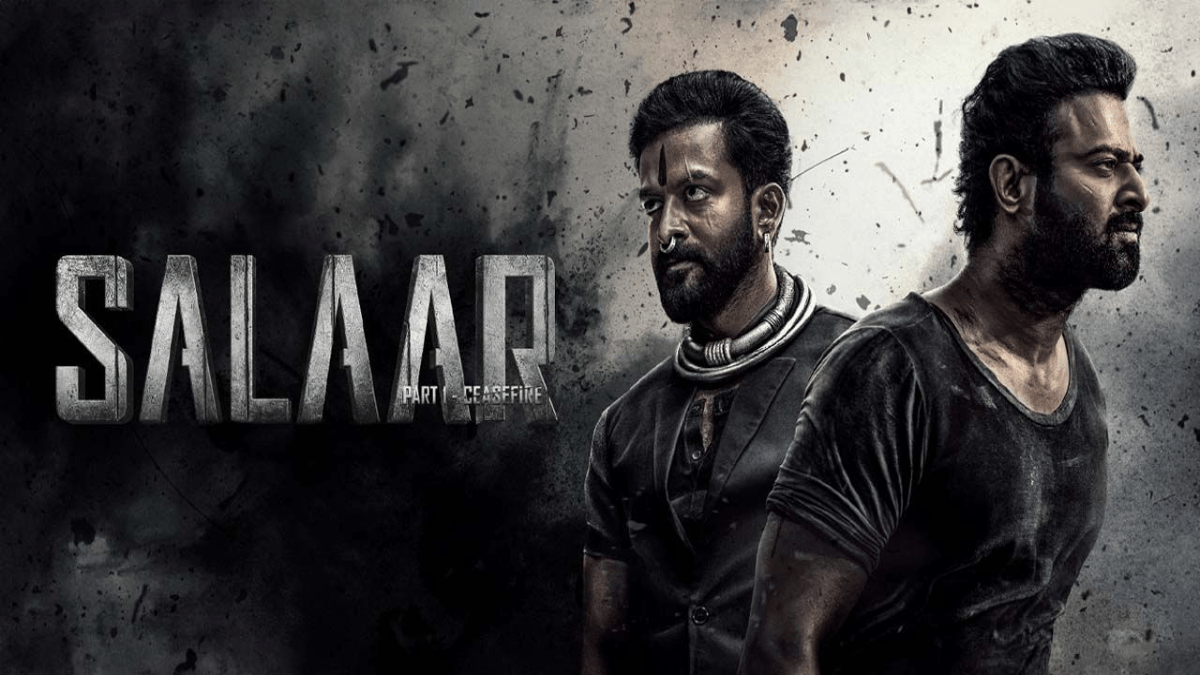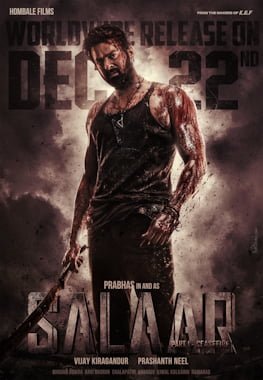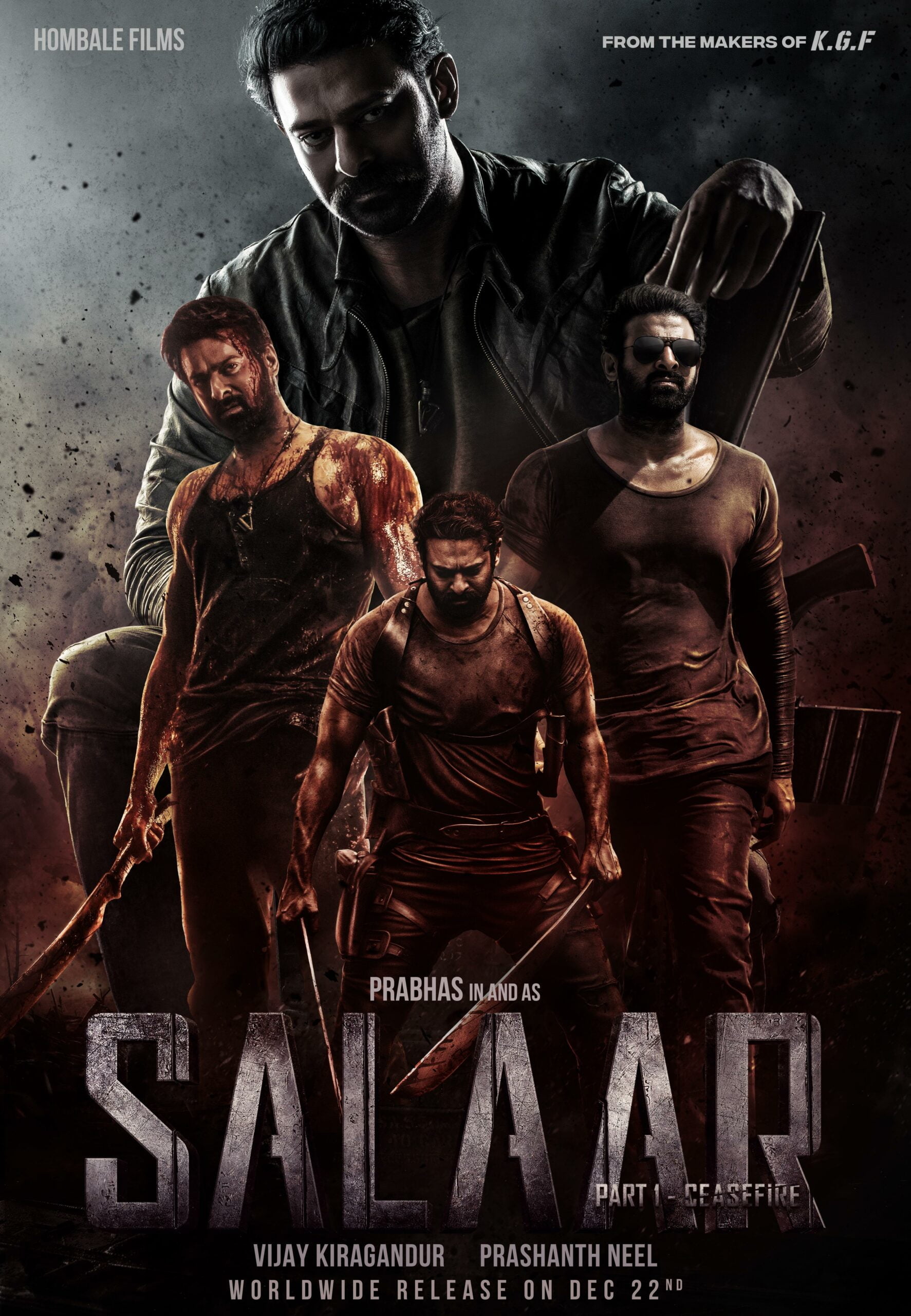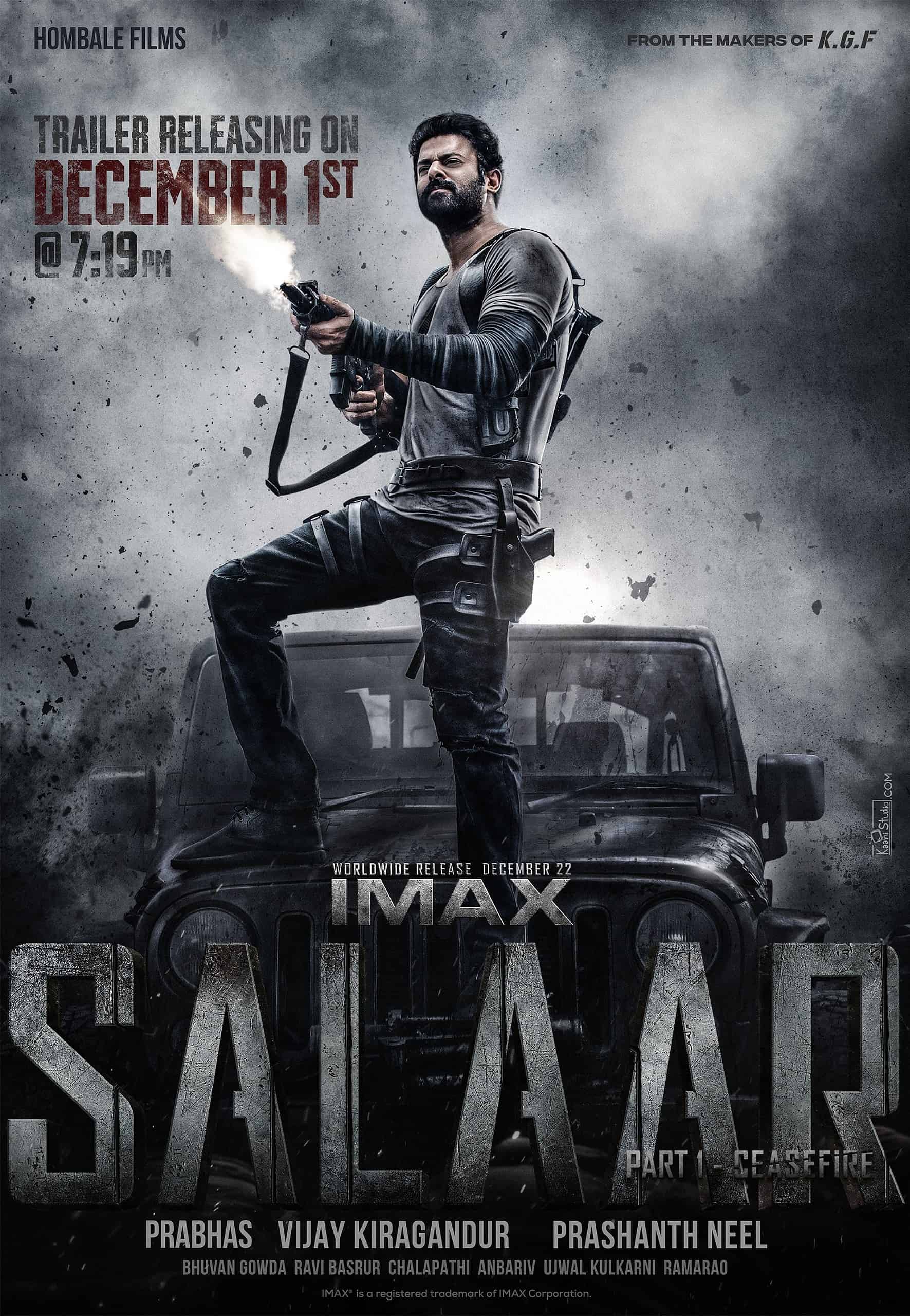Salaar, directed by Prashanth Neel and featuring the dynamic duo of Prabhas and Prithviraj in pivotal roles hit the theatres nationwide on 22nd December 2023. The film in a generic view is an exhilarating cinematic journey that seamlessly blends raw action, compelling storytelling, and charismatic performances. As the much-anticipated film unfolds, the blockbuster in the industry can be seen as a magnum opus that elevates the Indian film industry to new heights. But does it also urge the audience to see the portrayal of hyper-masculinity in commercialised films as a compelling pattern?
Exploring gender dynamics and power portrayal in Salaar
Looking at the film, Salaar‘s storyline is set in a grimy underworld controlled by power dynamics, vendettas, and moral ambiguity. Right from the opening scene, the film portrays a universe dominated by masculine characters, where power dynamics, retribution, and sheer force are central themes.
Among the two crucial actors in the film, Prabhas, who plays Salaar, fills the screen with his depiction of a moody, enigmatic persona that is both strong and subtle. He easily controls the screen space with his towering presence, conveying the essence of Salaar’s multifaceted character catering for the audience who wanted a commercial film with a heroic male character in the pivotal role.
Looking at the other pivotal character among the duo, Prithviraj is seen as different from his usual roles and takes on the character of Aryan, a formidable adversary to Salaar. The chemistry between Prabhas and Prithviraj is electrifying, adding layers of tension and unpredictability to the narrative. The clash of titans they bring to the screen is a visual treat for fans and cinephiles alike if you are looking for a film that feeds into the heroism culture in a cinematic experience.
Overall, the macho narrative structure sets the tone for the film, depicting a society in which women are confined to the margins, frequently functioning as pieces in the vast chessboard of male power conflicts.
Overall, the macho narrative structure sets the tone for the film, depicting a society in which women are confined to the margins, frequently functioning as pieces in the vast chessboard of male power conflicts. In this sense, Shruti Haasan’s role serves as an important prism through which to examine the film’s portrayal of womanhood.
Dwelling deeper into this, analysing the film, it can be seen that although Haasan’s portrayal of her character may be constrained by genre norms, she manages to instill a feeling of agency and depth. As the story progresses, it becomes clear that her involvement is more than just that of a romantic interest or a passive observer. She navigates Salaar’s chaotic and deadly environment with tenacity and intellect, breaking established gender roles in the plot.
The portrayal of action-packed violence in the film: good or not?
Prashanth Neel, renowned for his directorial brilliance in the KGF series, has made a commercial hit with the former starring Yash, which was said to be a machismo film and with the release of Salaar, once again proves his mettle utilising the hero stardom in the action genre.
The screenplay, penned by Prashanth Neel himself, weaves a tale of revenge, betrayal, and redemption with a skilful blend of emotion and action in Salaar throughout. It is to be noted that his deft handling of the screenplay ensures a gripping experience from start to finish and the pacing is immaculate, allowing the audience to savour the intricate details of the plot while revelling in the adrenaline-pumping action sequences, which is inevitable in any film with the same genre. However, looking through a feminist lens critically, one cannot ignore the pervasive violence that permeates Salaar.
The film is unapologetically brutal, with visceral action sequences that contribute to its intense atmosphere. From high-octane fight scenes to ruthless confrontations, the violence becomes a narrative tool to emphasise the harsh reality of the underworld. Through a feminist lens, it is essential to question whether these depictions of brutality perpetuate harmful stereotypes or if they serve as a commentary on the toxic masculinity prevalent in such environments.
Yes, beneath the veneer of action and spectacle, the film delves into the moral dilemmas faced by its characters, questioning the fine line between justice and vengeance. It prompts the audience to reflect on the consequences of choices and the nature of redemption. Enhancing the action sequence, in Salaar, Bhuvan Gowda’s breathtaking cinematography captures landscapes and characters with precision, while sharp and impactful dialogues delve into relatable character psyches, transcending conventional action. Ravi Basrur’s masterful music intensifies emotional beats, creating an exceptional cinematic experience in every frame, dialogue, and note which is hard to not notice.
Yes, beneath the veneer of action and spectacle, the film delves into the moral dilemmas faced by its characters, questioning the fine line between justice and vengeance.
However, Salaar is not without its flaws, albeit minor. The film’s runtime, which exceeds the conventional duration, might test the patience of some viewers, questioning the typical pattern of a revenge drama, of a hero showcasing his or his companions’ power and autonomy with the least interest in knowing and showing the female characters with in-depth or similar essence of presence in the film.
The typical male heroism narrative in commercial cinema
Male heroism, a persistent topic in Salaar, requires core analysis. Prabhas, as the title suggests, personifies the archetypal hero: powerful, charming, and driven by a sense of justice. The problem is to determine if this image maintains traditional masculinity or creates an opportunity for reframing heroism outside of gendered standards.
The film’s portrayal of masculine heroics is both a strength and a possible source of dispute. On the one hand, it gives spectators a captivating core person to rally around, propelling the story forward. On the other side, it also risks reinforcing a narrative in which power and heroism are inextricably tied to physical strength and aggressiveness.
Even though there are other elements in the film, the film seems to be captivating for the “rebel star” Prabhas and Prithviraj Sukumaran’s screen presence. The KGF filmmakers commercialised action dominating screenplay urges us to consider whether other forms of heroism, based on empathy, cooperation, and emotional intelligence, may find a home in the hearts of the audience through the film.
Audience perception is crucial to the success and influence of films like Salaar, leading to the question that arises: How does the audience comprehend and internalise the gender relations depicted onscreen? It is critical to recognise the variety of responses, acknowledging that each person brings their viewpoints and experiences to the watching experience.
Audience perception is crucial to the success and influence of films like Salaar, leading to the question that arises: How does the audience comprehend and internalise the gender relations depicted onscreen?
Looking at it, in one way, Salaar can be seen as a cinematic achievement that exceeds expectations, with Prabhas and Prithviraj giving career-defining performances, with Prashanth Neel’s direction along with exceptional technical components, creating a new standard in Indian filmmaking.
Coupled with a gripping combination of profound issues and unrelenting action, Salaar can be appealing to genre fans and provides a thought-provoking cinematic experience, pushes limits, but also establishes a new bar for quality, cementing its status as a must-see. The film levels up the evolution of film-making techniques in Indian film with its gripping cinematic genius. But in a lens of viewing, it is a film that surpasses the hyper-masculine hero macho portrayal for commercialisation. This invites the audience to also consider how the film’s portrayal of violence and heroism might shape or challenge societal perceptions of gender roles.
In a nutshell, a film like Salaar may be a fascinating expedition into a hyper-masculine universe, where larger-than-life protagonists and explosive action sequences dominate the story. Others may interact critically, questioning gender relations and looking for subversive themes within the story itself.








